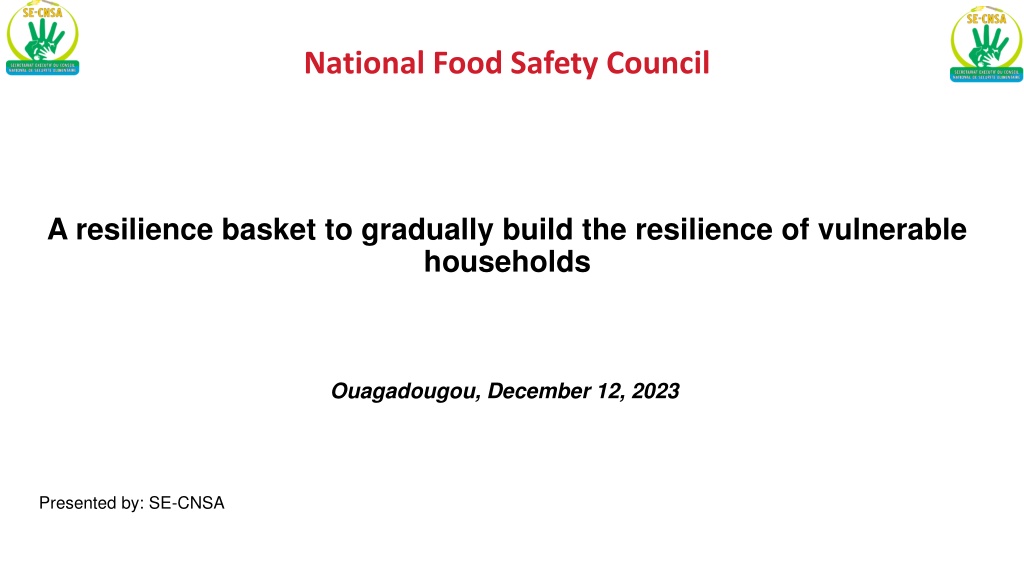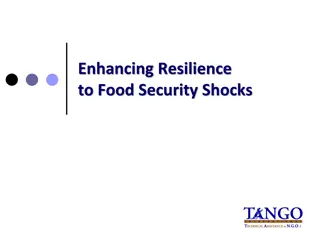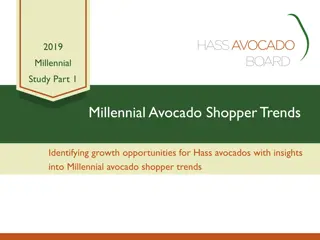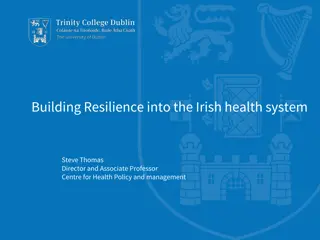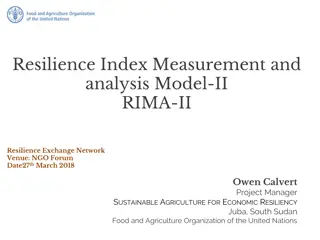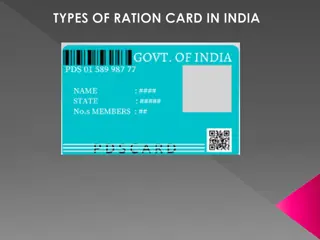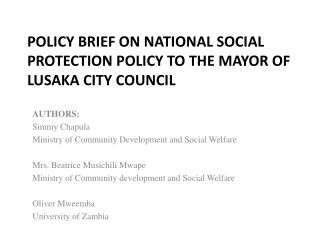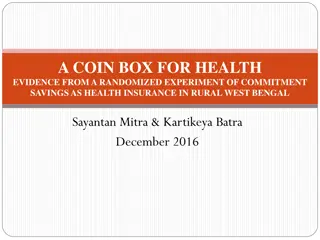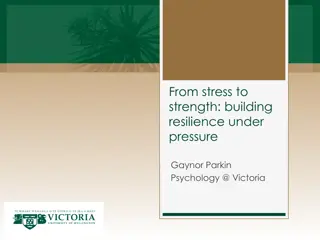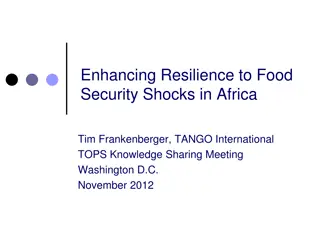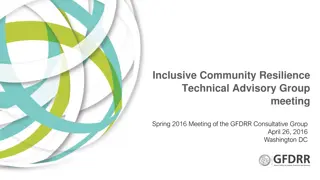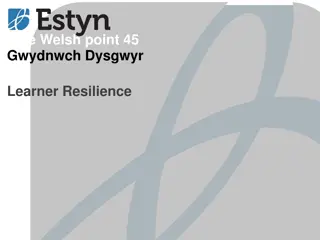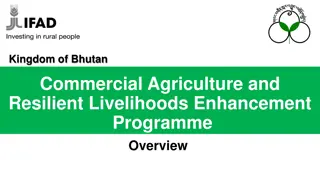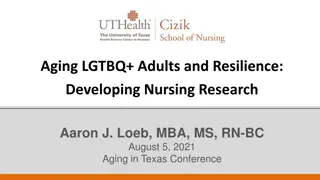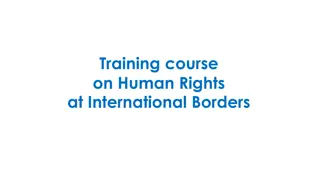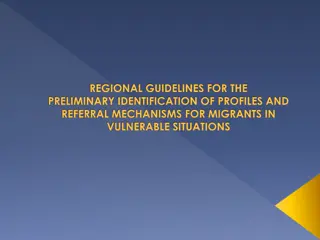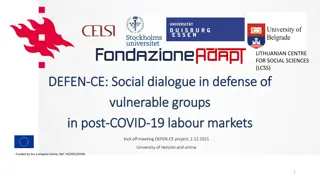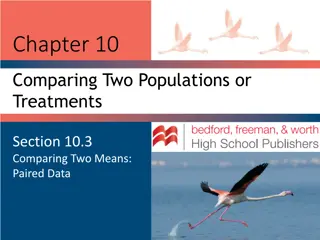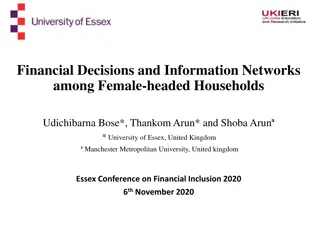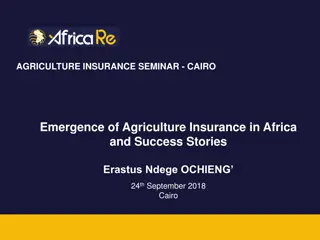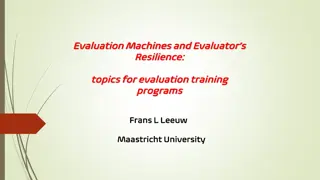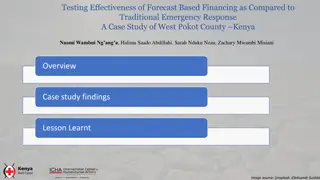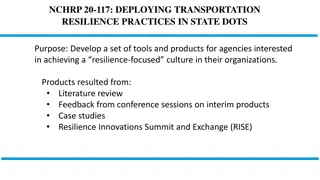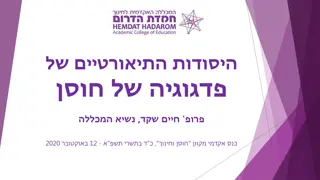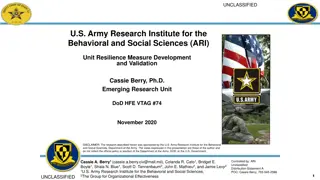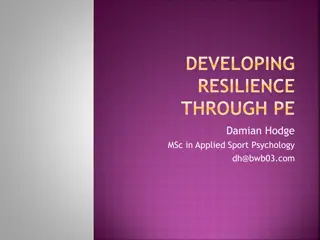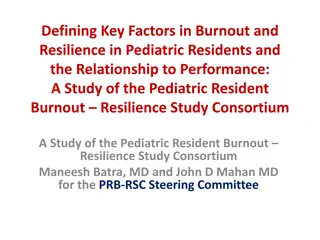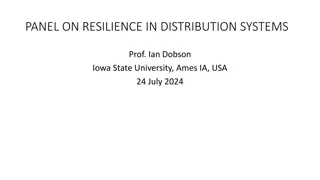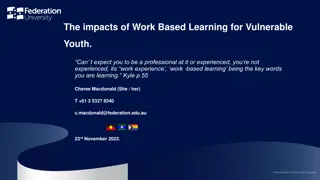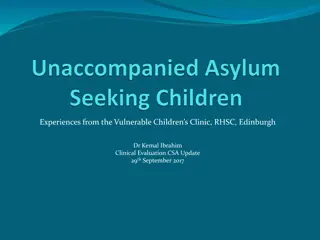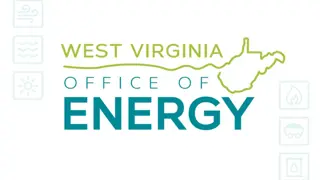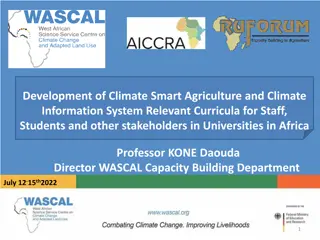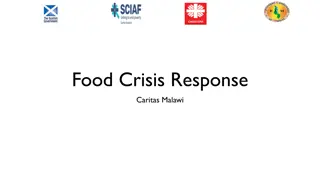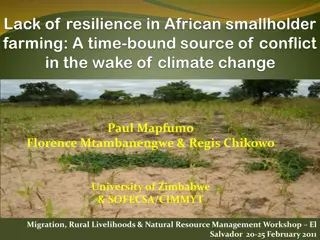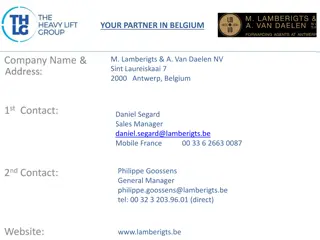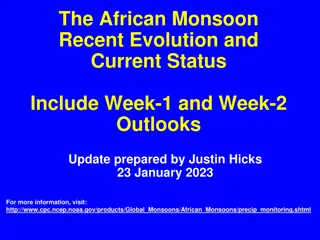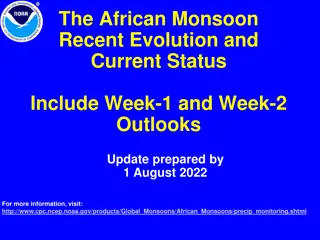Building Resilience for Vulnerable Households in West Africa
Addressing the challenge of food security in West Africa, the National Food Safety Council presents a strategic plan to gradually build the resilience of vulnerable households. The plan aims to improve food and nutritional security by empowering households and enhancing their productive capacities, ultimately reducing the need for food assistance. Through a collaborative effort involving various stakeholders, including state actors, development partners, civil society, and producers, the Resilience Basket initiative focuses on sustainable development goals, such as eradicating hunger and promoting sustainable agriculture by 2030.
Download Presentation

Please find below an Image/Link to download the presentation.
The content on the website is provided AS IS for your information and personal use only. It may not be sold, licensed, or shared on other websites without obtaining consent from the author. Download presentation by click this link. If you encounter any issues during the download, it is possible that the publisher has removed the file from their server.
E N D
Presentation Transcript
National Food Safety Council A resilience basket to gradually build the resilience of vulnerable households Ouagadougou, December 12, 2023 Presented by: SE-CNSA
Presentation plan Introduction I. Objectives of the resilience basket II. Design process and players involved III. Contents of the RESILIENCE basket IV. Main innovations and the process of BASKET appropriation V. Basket implementation challenges and RECOMMENDATIONS Conclusion 2
Introduction (1/1) The issue of food security in West Africa is a social, economic and political challenge that public authorities are seeking to curb. Need for effective, structural measures to curb this situation Sustainable Development Goal (SDG) 2, which globally aims to "eradicate hunger, ensure food security, improve nutrition and promote sustainable agriculture" by 2030 The PRP-AGIR, adopted in 2016 and whose vision is: by 2035 the poverty of the Burkinab people and the vulnerability of their livelihoods are reduced by half and they enjoy sustainable food security The PNSAN, adopted in 2018, with a vision to 2027 which is to ensure all populations at all times have equitable access to a balanced, sufficient and healthy diet in order to contribute to reducing poverty, consolidating social peace and achieving sustainable development. This is also the framework of the resilience basket, a strategic and programmatic adaptation developed by SE- CNSA with the support of all players in the national SAN system to gradually build the resilience of vulnerable households. 3
Resilience basket objectives (1/1) Overall objective: to help improve the food and nutritional security of vulnerable households by focusing on strengthening livelihoods in order to reduce the need for food assistance. Specific objectives: Restore the productive capacities of vulnerable households, i.e. access to land, inputs, equipment, etc; Gradually build the resilience of vulnerable households ; Empower vulnerable households; Increase the economic potential of vulnerable households. 4
Development process and players involved (1/1) Concerted and inclusive process with participation between state actors; development partners, civil society and producers. Process started in 2019 with the following stages: mapping resilience players ; capacity-building for resilience players on the RIMA II tool; defining the contents of the resilience basket ; drafting and finalizing the resilience basket document ; validation of the resilience basket document. 5
Resilience basket contents (1/3) Humanitarian kit (1/1) : Enables households to get through the lean period without having to sell their productive assets. Food kit: This kit consists of cereals (sorghum, millet, corn, rice), legumes (cowpea) and oil. Nutrition kit: This kit covers the cost of caring for malnourished children from vulnerable households and their carers. Health kit: This kit includes a lump sum to cover the cost of consultations, prescriptions and vaccinations. Education kit: This kit includes: APE contribution, school supplies, school uniform, indirect school expenses. 6
Resilience basket contents (2/3) Resilience kit (1/2) : Agriculture kit: cereal seeds (corn, sorghum/millet), cowpea seeds, vegetable seeds, mineral fertilizers, phytosanitary products, small plant production equipment. Breeding kit 1: goat breeding units (3 female + 1 male), feed, lump sum for shelter and veterinary care. Breeding kit 2: sheepbreeding units of sheep (3 females + 1 male), feed, lump sum for shelter and veterinary care. 7
Resilience basket contents (3/3) Resilience kit (2/2) : Breeding kit 3: pig breeding units (3 females + 1 male), feed, lump sum for shelter and veterinary care. Breeding kit 4: poultry breeding units (10 hens + 1 rooster), poultry feed, lump sum for veterinary care and poultry house construction. AGR Kit: Consists of a lump sum to enable vulnerable households not involved in agriculture or livestock farming to carry out an income-generating activity. 8
Main innovations and adoption processes (1/2) Main innovations (1/2) A fresh approach to SAN The household, basic social entity and unit of analysis The resilience basket, production unit and economic input Complete packages of actions enabling households to gradually emerge from their situation of vulnerability: humanitarian kit and resilience kit Households are free to choose the resilience kit they want, which will enable them to take charge of their own lives in the long term. Based on the determining factors for building resilience: basic social services, assets: productive and non-productive assets: land, livestock and durable goods, social safety nets, adaptive capacity, which is a household's ability to adapt to a new situation and develop new coping strategies. NB: Having several sources of income, for example, can mitigate the negative effects of a shock on a household. 9
Key innovations and adoption processes (2/3) Main innovations (2/2) Actions are planned according to livelihood zones. Advantages : The resilience basket is in line with the current vision of the MARAH authorities; The resilience basket will contribute implementation of the 2023- 2025 agropastoral fisheries initiative. to the and 10
Key innovations and adoption processes (3/3) Ownership process The ownership process followed the following stages: Work session to harmonize the costs of the resilience basket with those of the minimum expenditure basket, especially with regard to the humanitarian basket. National workshop to validate the resilience basket Regional workshops to disseminate the resilience basket 11
Implementation challenges and recommendations (1/2) Challenges in implementing the resilience basket Availability of financing ; Households' access to land: the land issue was discussed at length during the first panel, and without land vulnerable households cannot build their resilience. Targeting (to assess the real needs of each household) using the HEA method; Synergy of actions involving all players (state and non-state); Close supervision and monitoring of beneficiaries. 12
Implementation challenges and recommendations (2/2) Recommendations To the State Increase the budget allocated to implementing actions in the resilience basket for vulnerable households TFPs, NGOs and associations Help implement the resilience basket in your areas of intervention for the benefit of vulnerable households Ensure that, at the end of the intervention, beneficiary households are able to look after themselves. 13
Conclusion (1/1) The resilience basket a strategic adaptation designed to enable short-, medium- and long-term : Making food available and diversifying diets in beneficiary households; Increase household incomes by providing access to other basic products needed for daily consumption; Help build local food reserves; Regularly supply school canteens with food products; Massively employ young people and develop the local economy. 14
THANK YOU FOR YOUR KIND ATTENTION!
Vis vis expectations of workshop participants Given the country's current context, we need to tackle the root causes of food and nutritional insecurity. These solutions involve supporting vulnerable households to progressively strengthen their livelihoods, so that they can take charge of their own affairs and do without food assistance. Refocus the basket's actions to help implement the agropastoral offensive Reflect on the PoR implementation strategy: should we provide all the kits to the beneficiaries, or should we call on the actors involved in the PRSPV to provide the beneficiaries with food assistance during the lean period, so that they can feed themselves and go about their work of strengthening their means of exit? 14
Vis vis expectations of workshop participants How can we support households with children in school with the education kit? How to support beneficiaries with health and nutrition kits? How will inputs, small equipment and reproductive nuclei be acquired for vulnerable households? For households adopting vegetable production, what is the minimum surface area required? What is the recommended number of employees? How will households opting for the AGR Kit be supported? What close support/advice system should be put in place to accompany beneficiaries? 14
